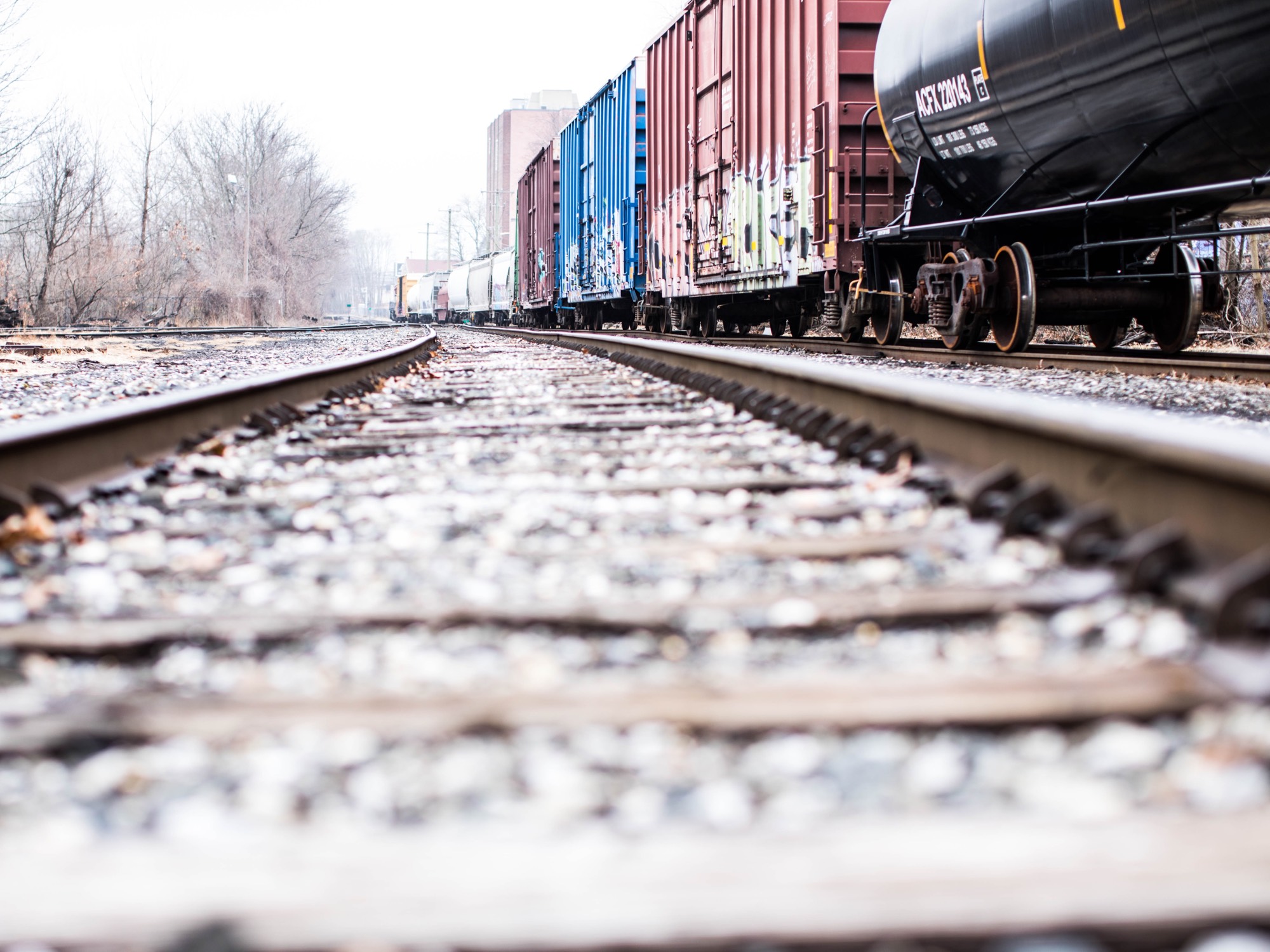
Mark Juett's Louisville & Nashville - LC&L Subdivision
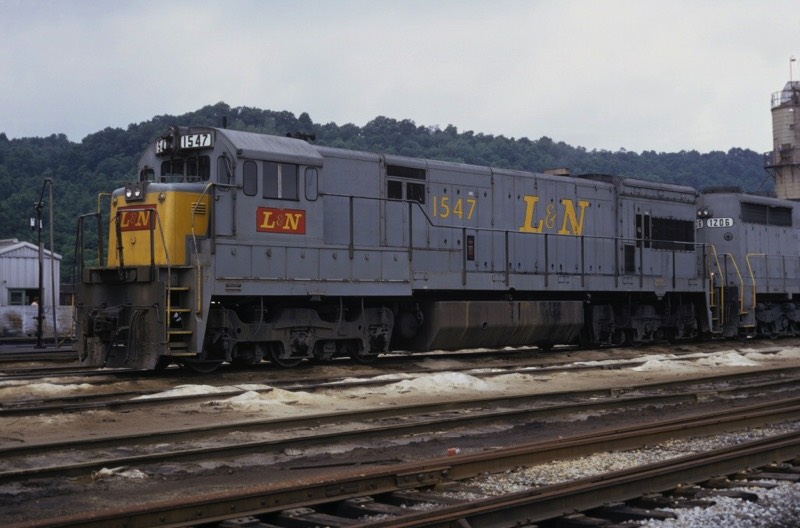
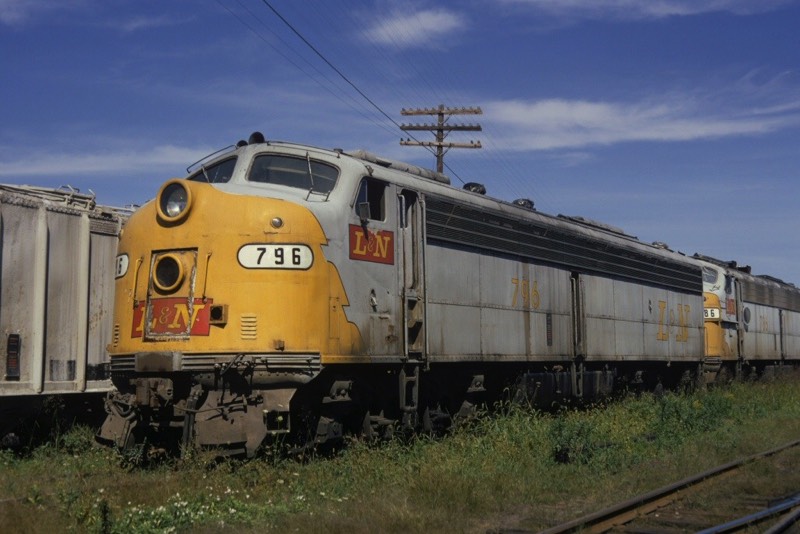
Prototype History of the Railroad
By July 1851 surveyors were locating the route. By 1853 crews were clearing right of way. The first eight miles of the line from Louisville were not completed until the summer of 1855. On October 27, 1859 the first train ran from Louisville all the way to Nashville.
The Louisville Cincinnati & Lexington, a connecting railroad completed its “Short Line’ to Covington, KY just south of Cincinnati in 1869. Predecessor to the LC&L was the Lexington & Ohio chartered in January 1830, predating the L&N by twenty years. The L&O laid its first six miles of flat iron rail on limestone sills from Lexington in a westerly direction towards Frankfort reaching that city in 1834 29 miles away. Still at that time trains were pulled by horses. The L&O claims to be the first railroad west of the Alleghany Mountains; a claim shared with the Pontchartrain Railroad near New Orleans, which also later became part of the L&N.
The financial panic of 1837 prevented and further construction towards Louisville. Some years later, the Louisville & Frankfort RR did complete this portion of the line reaching Louisville by 1851. The L&O consolidated operations with the L&F for continuous train operations between Lexington & Louisville. The merged road was known as the Louisville Cincinnati & Lexington.
The LC&L built the “Short Line from LaGrange to Covington after the Civil War. The Short Line later became the L&N Cincy-Louisville main line, and the Louisville-Lexington line became the western end of the Eastern Kentucky (EK) Division. The LC&L became part of the L&N on July 1, 1881 when the L&N purchased the entire capital stock of that road.
The Short Line is one of three subdivisions of the Cincinnati Division. The Short Line (or Louisville, Cincinnati and Lexington) subdivision extends 103 miles from Latonia to East Louisville comprising the northern leg of the Cincinnati to New Orleans line. The Short Line parallels the Ohio River and one would think that a river route would be flat with fewer hills and valleys, Similar to the C&O Cincinnati Division going up the Ohio River from Cincinnati. However, the LC&L engineers and surveyors kept out of the Ohio Valley flood plain, and thus crossing several tributary creeks and rivers, thereby climbing and falling most of the 103 miles. The Short Line is a very challenging and rugged stretch of railroad. From East Louisville to Cincinnati Union Terminal there is only about 29 miles of fairly level track. The Short Line has several dips and peaks.
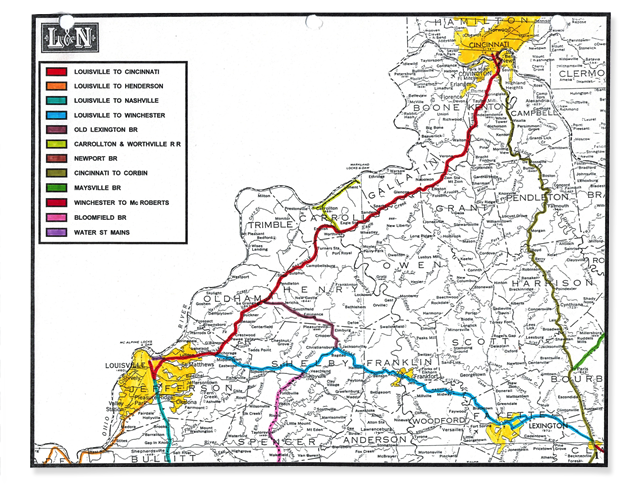
The Layout
The track is about 80% complete (265’ mainline), having not yet reached Louisville. Scenery is about 50% complete. Signals are installed and operate ABS between DeCoursey and Worthville. Future plans are for building a replica GRS CTC machine once all track is constructed. Hardware will be cast replica parts.
Layout Accessability Information
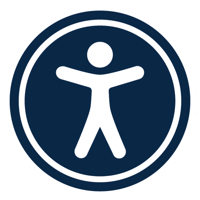
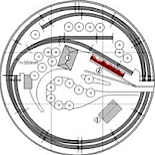
- HO Scale.
- Era: September 1967
- Layout space of 800 Square Feet plus crew lounge and dispatcher's office.
- Linear point to point, double deck. Single track with passing sidings, mainline run 265’ currently.
- Minimum radius 30” with more generous curves elsewhere. Switches #6 - #10 hand built.
- Height 40 -66 inches.
- Walk out basement and stairs with handrail.
- NCE DCC with all wireless ProCab throttles and sound in all locomotives.
- JMRI Switch list.
- Method of operation Time Table and Train Orders, with ABS signals between DeCoursey and Worthville. The Carrolton RR branch is dark.
- Signals and yard control panels controlled by Dr. Chubb Computer Model Railroad Interface
- Road Crews have passenger, fast freight, coal drags and local switching jobs.
- Telephone communication with Train Dispatcher.
- Fast Clock ratio 3:1.
- Operating Sessions are 8 scale hours, 2:45 actual.
- Number of operators is 9 (1 Dispatcher, 1 Yardmaster, 3 locals, and 5 Road Crews). 10 operators can be accommodated if one is a dispatcher working under the direction of a qualified dispatcher.
- Layout room has a crew lounge and restroom.
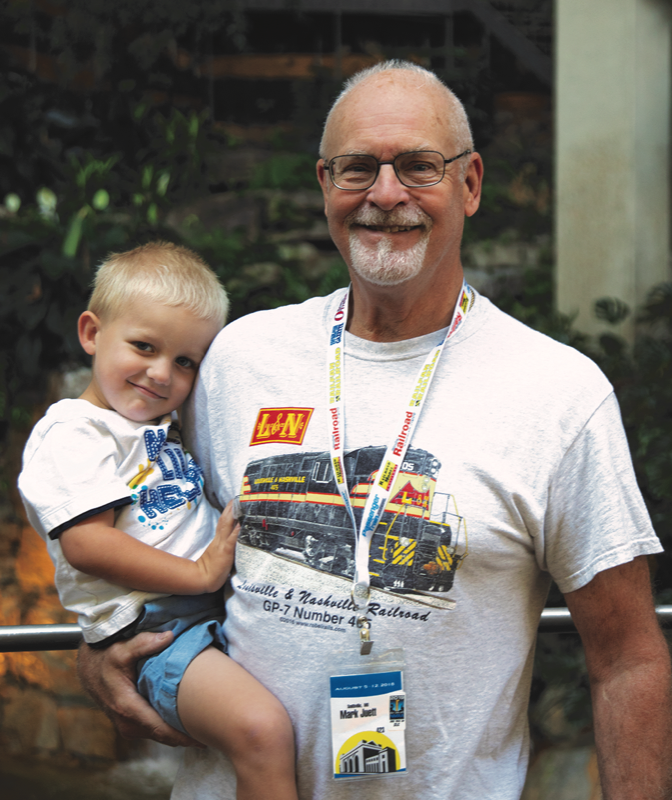
Much of the intrigue of model trains was the mechanical and electrical (and later electronic) control. This interest in things mechanical and electronic led to an Associate Degree in Electronic Engineering Technology, later a BS in Ag Engineering. Mark practiced engineering only two years before being thrusted into management, He holds an MBA from Rockhurst University.
Mark has years of experience in hand laying track, custom made switches and crossings and other specialized track that is not available commercially. He built one of the first command control systems from components when Keith Gutierrez introduced the CTC-16 in the late 1970’s. Later Mark converted to DCC in 2003. He has written the monthly column the Pulse of DCC in the NMRA Magazine since its inception in May 2014. In addition, he was a DCC Conformance Tester for the NMRA. Later Mark was the manager of the NMRA DCC Working Group. Currently Mark is the Deputy Standards & Conformance Manager for the NMRA and continues to serve on the DCC WG. He also was an early adopter of Dr. Bruce Chubb’s Computer Model Railroad Interface.
He also has considerable experience in detailing locos and rolling stock, custom painting and weathering as well as scratch building of structures in styrene, wood, plaster and brass. Mark has reworked older locos for clients to make them run better and installed DCC decoders for others. Mark has also shared his experience with others through clinics and presentations at NMRA Division, Regional and National meets. He served as Clinic Chairman for the NMRA 2018 National Convention in Kansas City.
After years in the corporate world and nearly a decade running his own fire and water restoration business his friend Miles Hale gave him an opportunity to pursue one of his great passions, as Miles and Fran were wanting to transition into retirement. Mark’s company builds and maintains custom model railroads, does other custom model railroad work in addition to construction of model railroad space.
Mark is MMR 660 and currently holds the following National Model Railroad Association Achievement Program certificates; Engineer Electrical, Engineer Civil, Model Railroad Author, Master Builder Scenery, Chief Dispatcher, Association Volunteer, Master Builder Structures and Master Builder Cars.
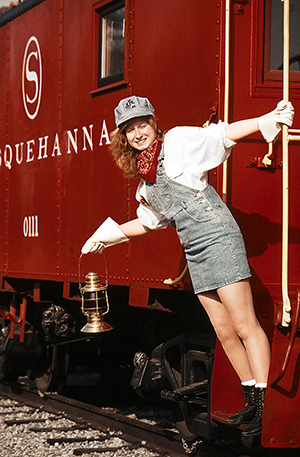
Yard Master Latonia- Operates the yard engine and directs the Latonia shifter serving local customers and assisting the yardmaster. Handles through train pickups and setouts, makes up local freights and turns two passenger conisist.
Five road crews - Through freights, passenger trains, coal drags and local turns.
Two local switching jobs- Serve customers in Latonia, Covington and Newport
Photo Gallery
-
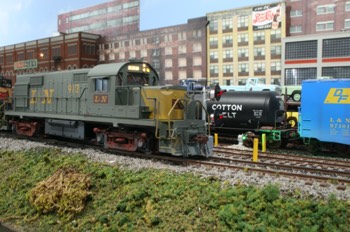
RS-36 #912 has knocked down the signal as she is passing Latonia on the point of a through freight.
-
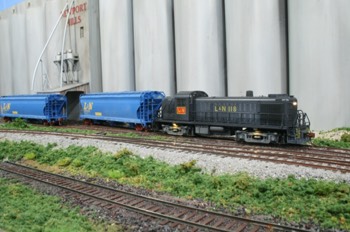
L&N RS-3 #118 is still earning her keep in 1967 as she spots 2 Big Blue grain hoppers at Newport Mills for unloading.
-
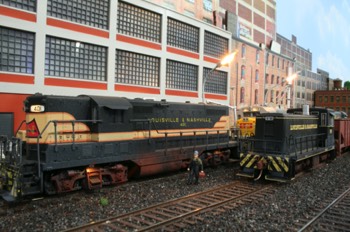
L&N GP-7 # 401 in her resplendent black and cream paint sets idling at the fuel pad with only her number boards and ground lights lit. She shares time with sister units GE U-30-B #2707, GE U-28-B 2504 and GE 70 Ton #99.
-
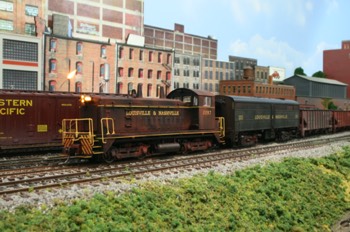
loco manufacturer owning units from EMD, GE and ALCO with a few from Baldwin. Nor did L&N care about matched MU consist, they paired up whatever was available and that ran. Many older units served out their last years in transfer service in the Cincinnati area as depicted in this photo.
-
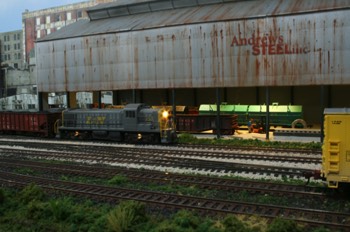
L&N RS-3 253 shoves a cut of Eastern Kentucky coal to the C&O interchange past Andrews Steel in Covington, KY. The L&N shipped grades of coal desired in steel making to northern Indiana by transferring to the C&O at Covington.
-
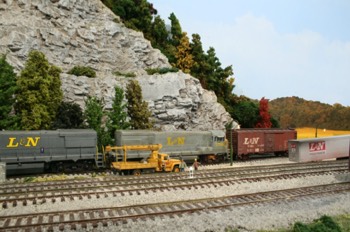
The crew of the Worthville Turn spots a box car on the CNO&TP interchange behind the station at Walton, KY while the crew of signal maintainers plans their next task.
-
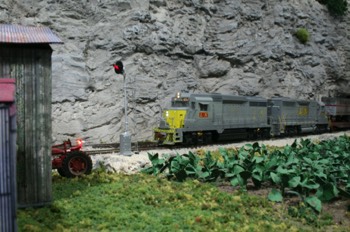
A nearly new L&N GP-30 in fresh paint with a brand new GP-35 assisting is leading TOTE (Trailer On Train Express) train 127 out of tunnel #4 near Walton KY as they pass by a tobacco field on the Evans farm.
-
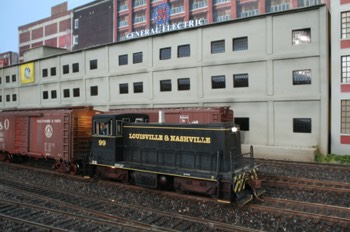
Number 99, a GE 70 Ton (one of two smallest locomotives) goes about her daily duties switching cars for customers around Latonia and assisting the Latonia Yard Master. A friendly wave from the engineer tells us he doesn’t mind rail fans so long as we take our photos from a position off the railroad property.
-
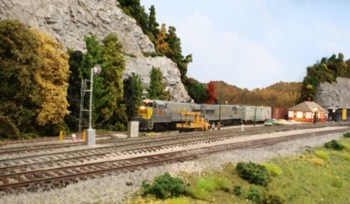
Interchange cars are being set out by the Worthville Turn #249 and will be picked up tomorrow by the Southern RR.
-
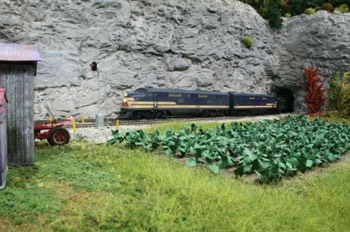
By 1967 trains 1 & 2 and 3 & 4 have been combined and are now trains 1 & 4. Downgraded, they now have a lot of head end cars with express freight and one coach. Sometimes a Trailer On Train Express (TOTE) or two are tacked on the end. Train 1 takes the siding, near a tobacco patch; to pull into the station to drop and pickup mail and express packages.
-
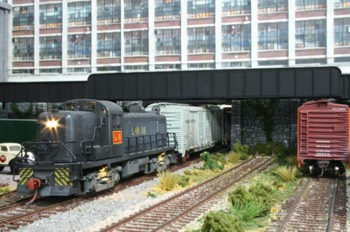
A venerable ALCO RS3 makes a shove of a cut of cars to the Pennsylvania RR.
-
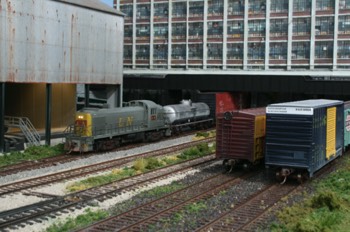
-
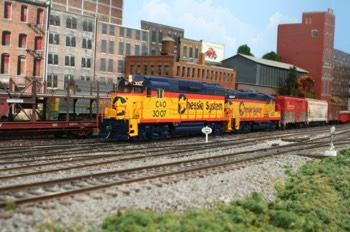
A venerable ALCO RS3 makes a shove of a cut of cars to the Pennsylvania RR.
-
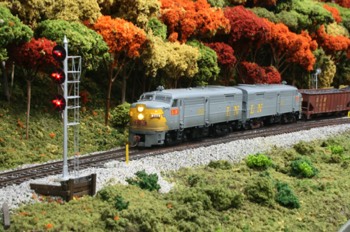
On a sunny autumn day in 1967, ALCO FA-2 numbers 360 and 318 move a coal train extra south down the LC&L sub towards the interchange at Worthville, where the crew on the Carrolton RR will deliver the loads to the Kentucky Utility Plant at Gent, KY.
-
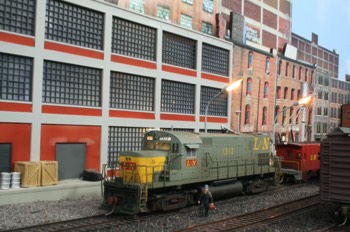
L&N C-420 idles in the yard with cab lights on and number boards lit, awaiting her next assignment. The engineer is on board checking things over while waiting for his conductor, with grip in hand who is about to board.
